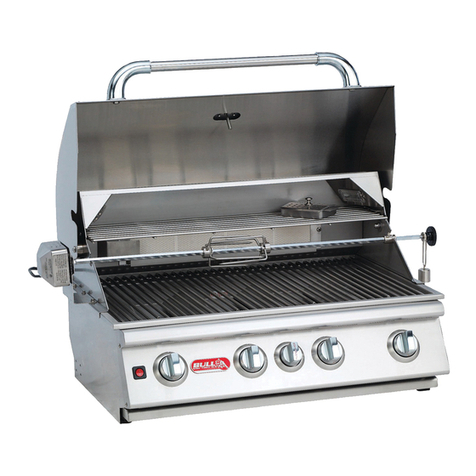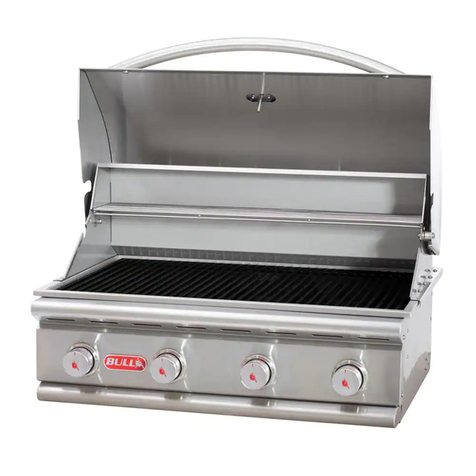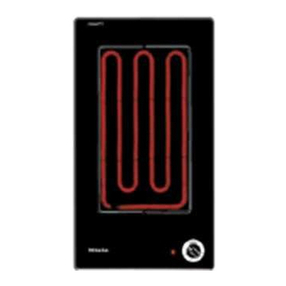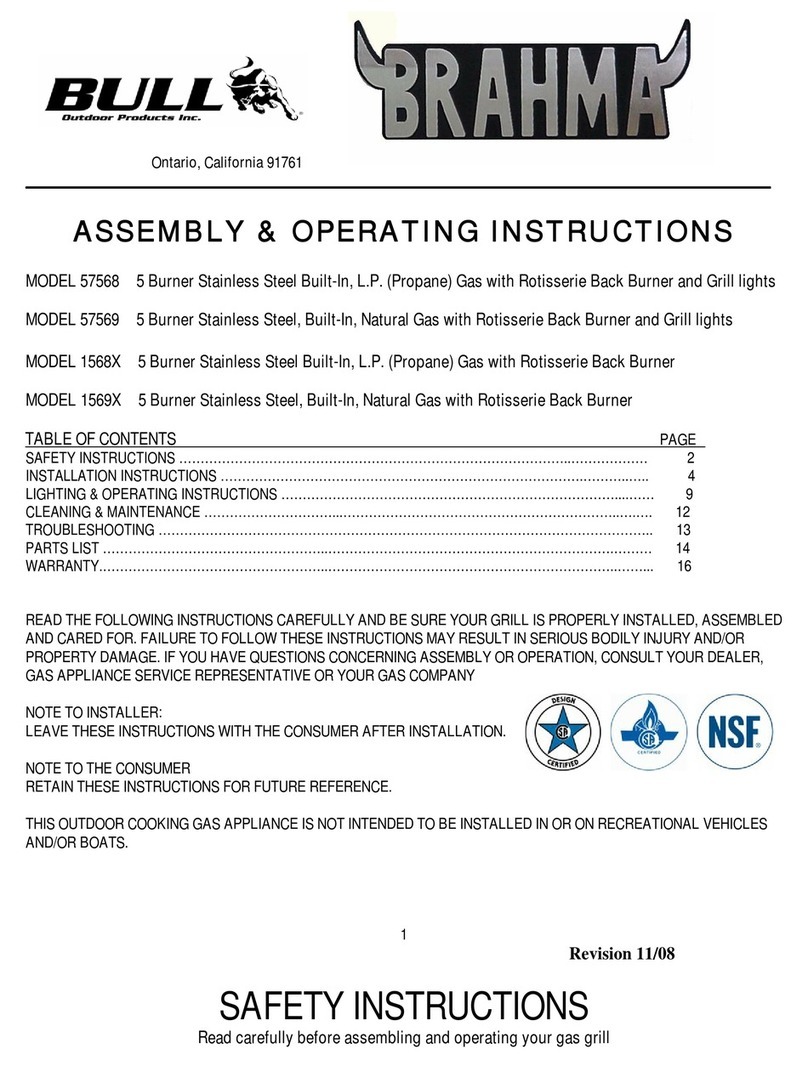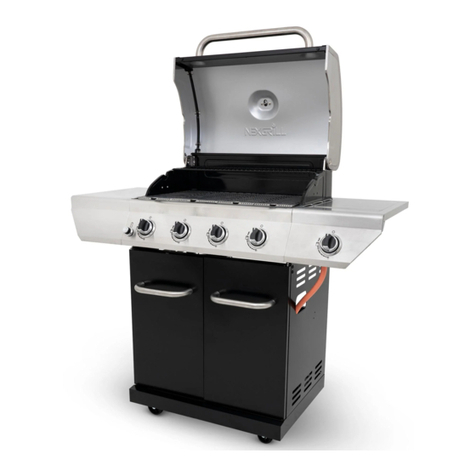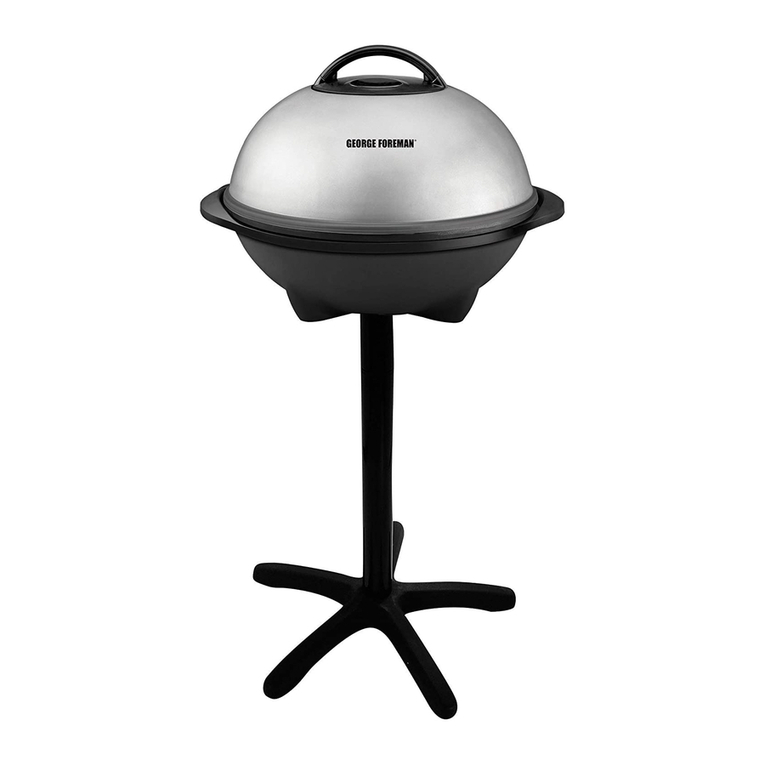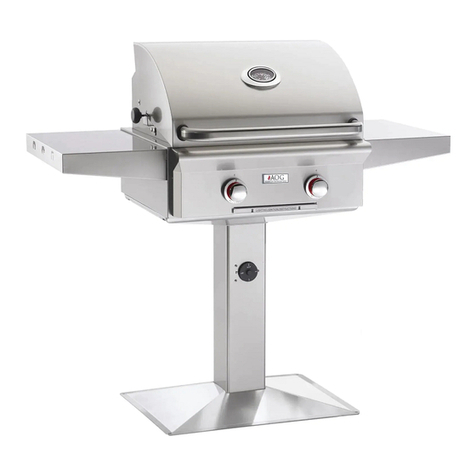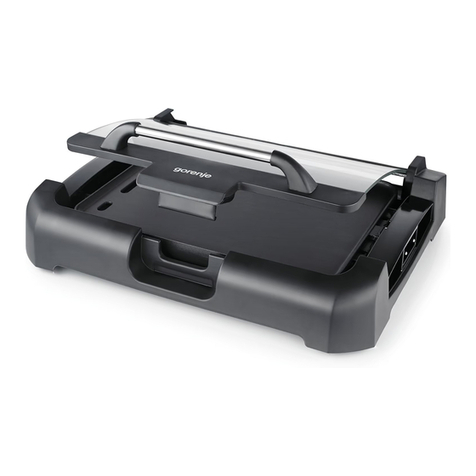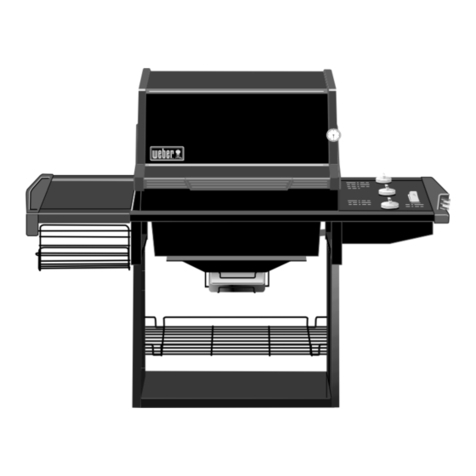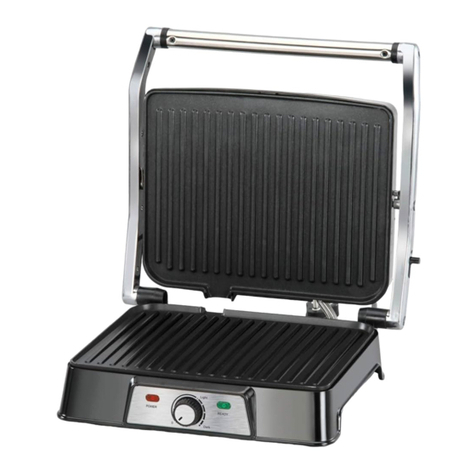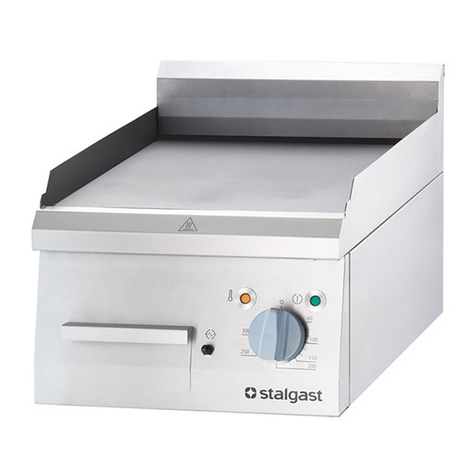
3
SAFETY INSTRUCTIONS
GRILL OPERATIONAL SAFETY
WARNING! FOR YOUR SAFETY, READ THE GUIDELINES BELOW
FOR ASSEMBLY AND OPERATION OF YOUR GRILL.
YOUR GAS GRILL IS ONLY FOR OUTDOOR USE.
PROTECT CHILDREN: DO NOT ALLOW CHILDREN TO OPERATE
GRILL. KEEP THEM AWAY FROM THE GRILLDURING USE, AND UNTIL
THE GRILL HAS COOLED COMPLETELY.
WARNING:
DO NOT USE YOUR GAS GRILL UNDER EXTENDED
AWNINGS, GARAGES, PORCHES, BREEZEWAYS,SHEDS OR OTHER
ENCLOSED AREAS. FAILURE TO DO SO COULD RESULT IN A FIREOR
PERSONAL INJURY.
DANGER:
DO NOT PUT GRILL IN STORAGE OR TRAVEL
MODE IMMEDIATELY AFTER USE. ALLOW GRILL TO COOL
TO TOUCH BEFORE MOVING OR STORAGE.FAILURE TO DO
SO COULD RESULT IN FIRE RESULTING IN PROPERTY
DAMAGE, PERSONAL INJURY OR DEATH.
WARNING: The outdoor cooking gas appliance, when
installed, must be electrically grounded in accordance
with local codes or, in the absence of local codes, with the
National Electrical Code, ANSI/NFPA 70, or the Canadian
Electrical Code, Part I, CSA C22.1.
a) To protect against electric shock, do not immerse cord or plugs
in water or other liquid.
b) Unplug from the outlet when not in use and before cleaning. Allow to cool before putting on or taking off parts.
c) Do not operate any outdoor cooking gas appliance that has malfunctioned or been damaged in any manner, such as a damaged
power cord or plug. Contact the manufacturer for repair.
d) Do not let the cord hang over the edge of a table or touch hot surfaces.
e) Do not use an outdoor cooking gas appliance for purposes other than intended
f) When connecting, first connect plug to the outdoor cooking gas appliance then plug appliance into the outlet
g) Use only a Ground Fault Interrupter (GFI) protected circuit with this outdoor cooking gas appliance.
h) Never remove the grounding plug or use with an adapter of 2 prongs.
i) Use only extension cords with a 3 prong grounding plug, rated for the power of the equipment, and approved for outdoor use with
a W-A marking.
ADDITIONAL SAFETY INSTRUCTIONS:
THIS GRILL IS NOT INTENDED FORUSE IN OR ON RECREATIONAL VEHICLES AND/OR BOATS.
DO NOT PLACE GRILL UNDER OR ON TOP OF AN SURFACE THAT WILL BURN
.
DO NOT ALLOW OBSTRUCTION OR RESTRICTION TO THE FLOW OF COMBUSTION AND VENTILATION AIR AROUND THE GRILL HOUSING.
GRILL CLEARANCE FROM THE BACK AND SIDE OF ANY COMBUSTIBLE SURFACE MUST BE AT LEAST 21 INCHES. DO NOT STORE
OR USE GASOLINE, OR OTHER LIQUIDS EMITTING FLAMMABLE VAPORS IN THE VICINITY OF GRILL OR ANY OTHER APPLIANCES.
DO NOT STORE EMPTY OR FULL SPARE LP GAS CYLINDERS AND/OR CHEMICALS UNDER OR NEAR GRILL OR ANY OTHER APPLIANCES.
KEEP THE FUEL HOSE AND ELECTRICAL CORDS AWAY FROM HOT SURFACES AND DRIPPING GREASE. CHECK AND CLEAN BURNER
VENTURI TUBES FOR INSECTS AND DEBRIS. A CLOGGED TUBE CAN LEAD TO A FIRE BENEATH THE GRILL.
KEEP THE VENT OPENINGS OF THE CYLINDER ENCLOSURE FREE AND CLEAR FROM DEBRIS.CLEAN OUTDOOR COOKING GAS
APPLIANCE WITH RECOMMENDED CLEANING AGENTS.
AVOID UNNECESSARY TWISTING OF THE HOSE. VISUALLY INSPECT THE HOSE PRIOR TO EACH USE FOR CUTS, CRACKS,
EXCESSIVE WEAR OR OTHER DAMAGE AND REPLACE IF NECESSARY. THE REPLACEMENT HOSE SHOULD BE THAT SPECIFIED BY
THE MANUFACTURER.
NEVER LIGHT GRILL WITH LID CLOSED OR BEFORE CHECKING TO ENSURE BURNER TUBES ARE FULLY SEATED OVER GAS
VALVE ORIFICES.
NEVER LEAN OVER COOKING SURFACE WHILE LIGHTING GRILL. USE BARBECUE TOOLS WITH WOOD HANDLES AND
GOOD QUALITY INSULATED OVEN MITTS WHEN OPERATING GRILL.
NEVER PLACE OBJECTS OR UTENSILS ON TOP OF GRILL LID.
WARNING: IF THESE GUIDELINES ARE NOT FOLLOWED, FIRE CAUSING SERIOUS INJURY OR DEATH MAY OCCUR.
DUE TO SPIDER WEBS
CAUTION: BURNERS MUST BE INSPECTED AND
CLEANED BEFORE FIRST USE.
Spiders and small insects occasionally spin webs or make
nestsin the burners during warehousing, transit and/or after
long periods of non- use. These webs can lead to a gas flow
obstruction, which could result in a fire in and around the
burner venturi tubes. This type of fire is known as “FLASH-
BACK” and can cause serious damage to your grill and
create an unsafe operating condition for the user. Although
an obstructed burner tube is not the only cause of “FLASH
BACK” itis the most common cause, and frequent inspection
and cleaning of the burners is necessary.
WARNING
NEVER cover slots, holes or openingsin the grill bottom or
cover an entire cooking grate with material such as
aluminium foil. Doing so blocks air flow through the oven
and may causecarbon monoxide poisoning.
Aluminium foil linings may trap heat causinga fire hazard.
